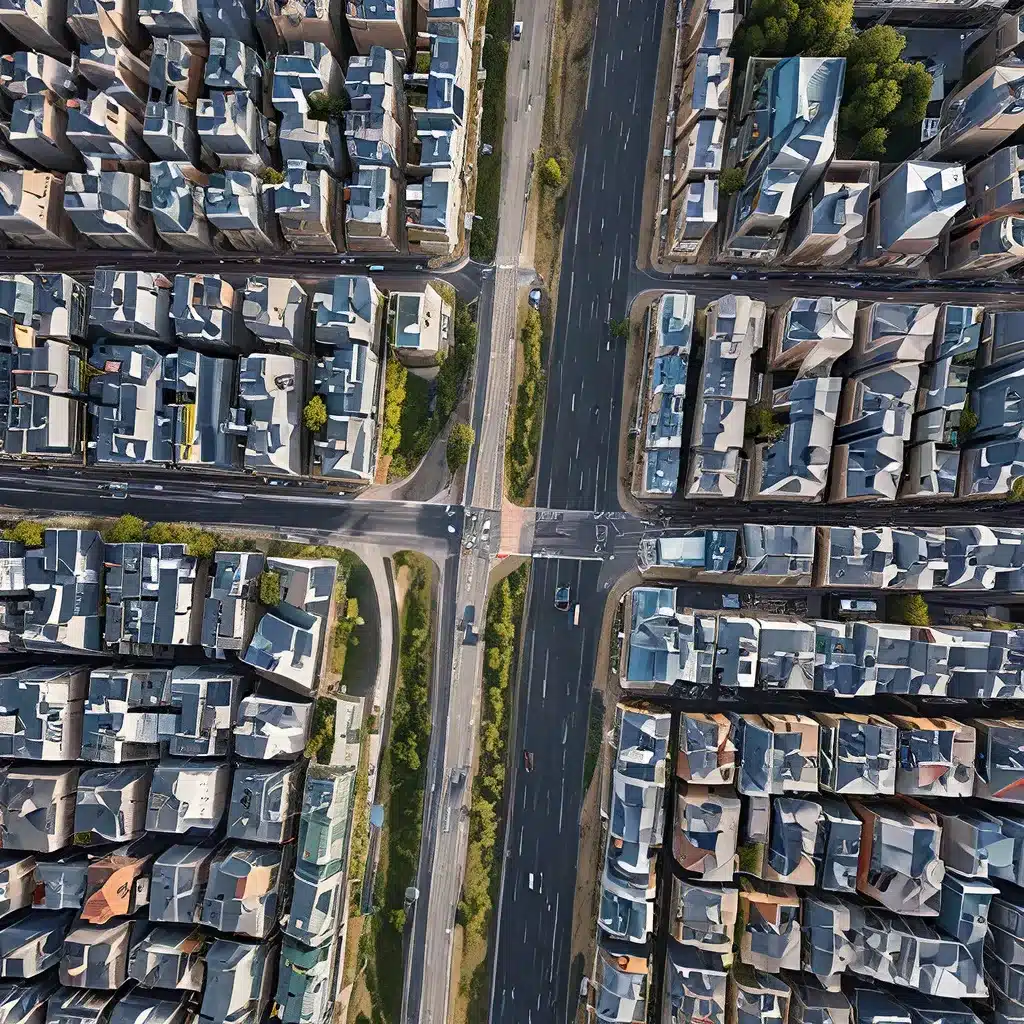
As someone who’s passionate about sustainability and the environment, I’ve always been fascinated by the interplay between renewable energy and urban planning. It’s a complex dance, with each element influencing the other in ways that can either amplify or undermine our collective efforts to create a more eco-friendly future.
The Urban Energy Conundrum
Let’s start by acknowledging the elephant in the room – cities are major contributors to global carbon emissions. With their dense populations, bustling economic activities, and insatiable energy demands, urban centers account for a staggering 70% of energy-related CO2 emissions. That’s a sobering statistic, one that highlights the critical importance of integrating renewable energy solutions into the very fabric of our cities.
But here’s the catch: urban planning and renewable energy don’t always see eye to eye. Local regulations, zoning laws, and bureaucratic red tape can create a veritable minefield for renewable energy projects, making it challenging to bring these sustainable solutions to the places that need them most. It’s a paradox that’s left many city planners and renewable energy advocates scratching their heads.
Bridging the Gap: The Role of Urban Planning
This is where the power of urban planning comes into play. As the nexus of economic activity and innovation, cities hold the key to unlocking a more sustainable future. By thoughtfully orchestrating the physical, social, and economic fabric of our urban landscapes, planners can create environments that are not only aesthetically pleasing but also environmentally responsible.
For example, high-density developments can reduce the need for personal vehicle use, thereby decreasing carbon emissions. Similarly, promoting mixed-use developments that bring together residential, commercial, and recreational spaces can shorten travel distances for daily needs, further reducing our reliance on fossil-fueled transportation. And the design of buildings, including their energy efficiency and the materials used in construction, plays a crucial role in the carbon footprint of urban areas.
Navigating the Regulatory Maze
Of course, the path to integrating renewable energy into urban planning is not without its obstacles. Local regulations, zoning laws, and bureaucratic processes can often feel like a labyrinth, making it challenging for renewable energy projects to gain the necessary approvals and permits. And let’s not forget the NIMBY (Not In My Backyard) syndrome, where residents may resist the installation of renewable energy infrastructure in their neighborhoods, fearing the impact on property values or aesthetics.
But here’s the thing – these challenges are not insurmountable. With a collaborative approach that brings together city planners, renewable energy experts, and community stakeholders, we can navigate this regulatory maze and find innovative solutions that work for everyone. It may require some creative thinking, a willingness to compromise, and a deep understanding of the underlying issues, but the payoff is well worth the effort.
The Renewable Energy Opportunity
And the payoff is substantial, my friends. By aligning renewable energy solutions with urban planning regulations, we can unlock a world of possibilities. Imagine cities that are powered by clean, sustainable energy, with buildings designed to maximize energy efficiency and transportation networks that prioritize electric vehicles and public transit. These aren’t just pipe dreams – they’re realities that are already taking shape in forward-thinking urban centers around the globe.
The truth is, renewable energy and urban planning are inextricably linked. They’re two sides of the same coin, each one dependent on the other to create a truly sustainable future. And the opportunities for innovation in this space are endless. From solar-powered smart grids to community-driven renewable energy projects, the possibilities are limited only by our imagination and our willingness to think outside the box.
The Path Forward
So, what’s the way forward? Well, it starts with open communication and collaboration between all the key stakeholders – city planners, renewable energy experts, policymakers, and community members. We need to identify the pain points, understand the regulatory landscape, and work together to develop tailored solutions that address the unique challenges of each urban environment.
It’s also crucial that we stay up-to-date with the latest research and best practices in this rapidly evolving field. Renewable energy technologies are constantly improving, and the regulatory landscape is ever-changing. By continuously learning and adapting, we can ensure that our urban planning strategies remain relevant and effective.
And perhaps most importantly, we need to champion the cause and inspire others to join the movement. Because the truth is, the future of our cities – and indeed, the future of our planet – depends on our ability to seamlessly integrate renewable energy solutions into the very fabric of our urban landscapes.
It’s a daunting challenge, to be sure. But I believe that with creativity, collaboration, and a deep commitment to sustainability, we can create urban environments that are not only livable and resilient but also beacons of hope in the fight against climate change.
So, who’s with me? Let’s roll up our sleeves and get to work, shall we? The future of our cities – and the planet we call home – is counting on us.

